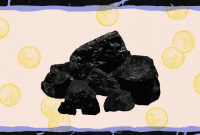Support strong Canadian climate journalism for 2025
This story was originally published by The Guardian and appears here as part of the Climate Desk collaboration.
The average ice cover over the five Great Lakes was just six per cent last month, placing it among the least icy Januarys since records began 50 years ago, according to the National Oceanic and Atmospheric Administration (NOAA).
The Great Lakes — Superior, Huron, Michigan, Erie and Ontario — are located at or near the U.S.-Canada border, and are connected by a network of smaller lakes and rivers that span a combined surface area of 95,000 square miles, making it the largest freshwater system in the world.
While some year-to-year variation in ice cover is normal, scientists say global heating is driving ice loss and warmer water temperatures, and is likely to worsen if no action is taken soon.
“In direct response to warming air temperatures, we are observing rapid ice loss and warming summer water temperatures,” said Prof. Sapna Sharma, an expert in environmental stressors on lakes at York University in Toronto. “If the planet continues to warm, 215,000 lakes may no longer freeze every winter and almost 5,700 lakes may permanently lose ice cover by the end of the century.”
The Great Lakes hold more than 20 per cent of Earth’s freshwater, with half of that in Lake Superior, the largest and most northerly of the five. Ice records show a 25 per cent drop in basin-wide ice cover and a trend toward fewer frozen days across the Great Lakes since 1973.
“There is a trend: a five per cent decline in average ice cover per decade, which may not sound huge but it is a substantial decrease,” said James Kessler, a physical scientist and ice expert at NOAA’s Great Lakes Environmental Research Lab.
“Open [unfrozen] lakes bring more rain rather than snow, which has knock-on environmental, cultural and societal impacts.”
Some areas have been hit worse than others. Ice records dating back to 1857 show that several bays on Lake Superior froze every winter until about 1997. Since then, as global heating has intensified, some have experienced entirely ice-free winters.
“The Great Lakes are now experiencing much lower ice cover, but in many regions, no ice at all. Large and deep lakes, including bays in Lakes Michigan and Superior, are most likely to permanently lose ice cover as soon as the 2060s if greenhouse gas emissions are not mitigated,” said Sharma.
The depth and breadth of the water system mean what happens in the Great Lakes doesn’t stay in the Great Lakes. In years with less or no ice cover, the lakes experience higher evaporation rates, warmer water and lower oxygen levels, making it harder for native coldwater fish to thrive and causing a knock-on effect on the entire food chain. Increased evaporation rates lead to lower water levels and fewer wetlands in the surrounding areas, adding stress on animal species already struggling to find food and adapt to warmer temperatures.
The snow and ice are key to Great Lakes culture and tourism, and the region boasts outdoor activities such as tobogganing, outdoor skating, dog sledding and ice fishing, as well as a multibillion-dollar snow removal industry. In warmer winters, recreational activities are cancelled, tourism takes a hit and drownings rise due to the unstable ice.
Less ice also frees hundreds of cargo ships to traverse the Great Lakes all year round and means fewer ice breakers to clear shipping channels, saving money for the commercial shipping industry.






Comments